Early Career Scientist Spotlight
Dr. Ryan Pfeifle (he/him/his)
Astrophysicist
X-ray Astrophysics Laboratory (662)
What inspired you to pursue a career in astrophysics?
I was fascinated with almost all things science – including astronomy – as a kid, but the specific 'ah ha!' moment of when I knew I wanted to be an astrophysicist goes back to my senior year of high school. I was sitting in my AP Physics class, sometime around the start of the school year, and my teacher made a few comments relating the idea of vectors to the expansion of the Universe; I was captivated, and that afternoon I went home and immediately watched 'Into the Universe' with Stephen Hawking and was absolutely awestruck. From that day, I knew I wanted to be an astrophysicist and study the Universe. The rest of the year, I was staring at the stars with my little childhood refractor telescope two-three nights a week, tracking satellites as they passed over my house, and watching as many documentaries as I could. And once I got to college, all I wanted was to pursue a degree in Physics. I’ve never looked back!
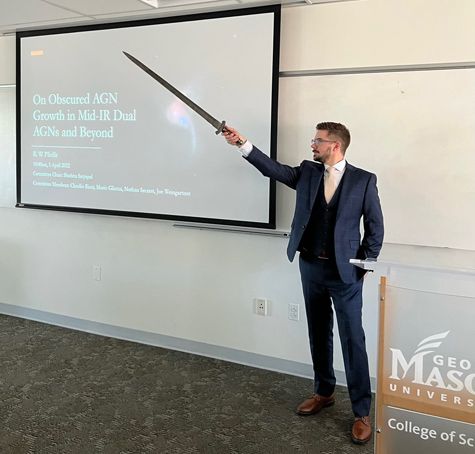
Credit: Natasha Latouf
What science questions do you investigate?
We’ve come to understand that supermassive black holes (SMBHs, with masses on the order a few million to a few billion times the mass of our own Sun) exist at the hearts of most massive galaxies. I am chiefly interested in the questions of "How do supermassive black holes grow and evolve?" and "What is the interplay between supermassive black holes and their host galaxies?" In pursuing answers to these questions, I search for and study active galactic nuclei (AGNs) in mergers of galaxies. Simulations performed over the last few decades have demonstrated that gravitational tidal torques that arise during a galaxy merger can efficiently funnel large quantities of gas into the nuclear regions of the constituent galaxies, which could potentially offer an efficient avenue for the fueling and growth of the SMBHs that reside in the centers of the galaxies (which light up as AGNs). I focus primarily on the search for pairs of AGNs in galaxy mergers, where each of the SMBHs (one per galaxy) are actively consuming large quantities of gas, because these systems have been predicted to coincide with the peak of the SMBH activity that is induced during the galaxy merger process, and thus they may represent a key growth phase for these SMBHs. Understanding these (potentially) key growth phases for the SMBHs may help to shed light on how SMBHs grew to such tremendous sizes across cosmic history.
What aspect of your work excites you the most?
I would say there are two aspects about my work that excite me the most. One exciting aspect is that, despite over 60 years(!) of arguments back and forth in the literature, we still do not have a clear consensus on the importance of galaxy mergers in fueling SMBH growth and activity. A controversy or a lack of consensus means there are questions to answer and new phenomenon to understand! The other exciting aspect is the discoveries themselves, especially when they come from new observations. I find it exhilarating to open a new set of data for the first time, knowing I have the privilege of being the first (or one of the first) human beings to ever see that data and then spotting something new that we didn’t know about before! Even better: nothing quite matches the feeling you get when you spot something unusual that you hadn't expected to find at all!

Credit: Kyla Jeanette Photography
What research accomplishment are you most proud of?
In my first year of graduate school, I was working on a dual AGN program that involved searching for two X-ray sources in Chandra X-ray imaging, and I happened to notice that one of our selected galaxy mergers appeared to have not two but three X-ray sources. Upon closer inspection of the optical imaging, I realized it was a merger of not two but three galaxies, which suggested we were looking at a triple AGN! Bear in mind, up until that point, no triple AGNs had ever been confirmed in a late-stage galaxy merger, where the nuclei are packed closely together within 10 kiloparsecs of one another, so this was an exciting object to spot! We spent a little over a year gathering additional data, spanning the optical, near-IR, and radio, for this system, and I was fortunate enough to lead the discovery paper in which we confirmed this galaxy merger as a bona fide triple AGN, the first such confirmed in the literature. I should mention, too, that we were not the only team to have uncovered this unique system, and a paper from another excellent research group also confirmed this triple AGN shortly after our own work. I actually wrote a Chandra blog post about this discovery back in 2019, which you can find here.
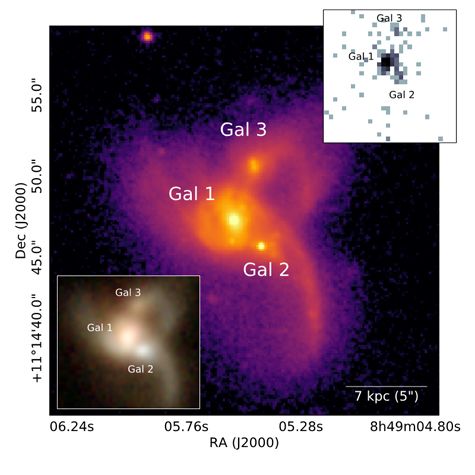
Credit: R. W. Pfeifle
If you were to expand your current research focus, what new topics would you explore?
Most of my work has focused on galaxy mergers where the constituent galaxies are roughly similar in mass (termed: major mergers), but I am growing increasingly interested in minor mergers (where the mass of one galaxy is far small than the other). Observations have demonstrated that minor mergers vastly outnumber major mergers, and theoretical studies have demonstrated that minor mergers can not only trigger AGNs, but that the SMBH in the smaller galaxy can grow 2- to 10-fold in mass if it inhabits a gas-rich galaxy! This is a dramatic amount of growth, and it is clearly an avenue of efficient SMBH evolution that we should explore when trying to understand the relationship between galaxy mergers and SMBH growth. You can bet I’m looking for ways to study this phenomenon through X-ray, mid-IR, or optical observations!
What advice would you give your younger self?
I have an ever-growing list of things I would tell my younger self if I could, but the most important pieces are probably these: Start learning and practicing coding early and often, and start reading/learning how to read scientific papers as an undergraduate. Science can be really, really frustrating and difficult; if you get stuck, go do something else (another task, go for a walk, go for a drive, or do whatever else you’d like to do), and more likely than not the solution will come to you later on. On that same note: you can afford to sleep and relax more (to be read: please take your weekends off); your projects will still be there, and you’ll have a healthier work-life balance while probably making more progress in the long run. Collaborations are the foundation of science, but they are not always easy: learn to put your foot down when you know expectations are unrealistic. And don’t shelve your ideas because someone doesn’t see the scientific merit; pursue your ideas until you prove there is or is not scientific merit. And finally, don’t feel inadequate or guilty for asking for help because you don’t know how to do something; science and research are both a learning process, and we all have to start somewhere.
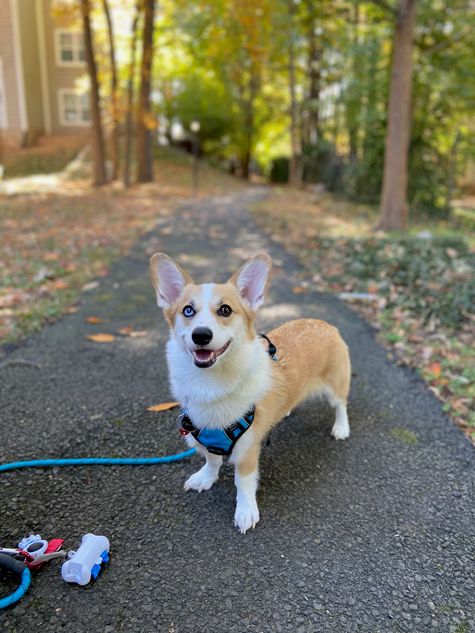
Credit: R. W. Pfeifle
What do you like to do in your free time?
In my free time, I love to binge television shows and movies with my fiancé, Natasha, and play with our dog, Olive (who, as it turns out, likes to watch Star Wars with me!). One of my go-to de-stressers is video games or board games with friends, which I play a few times a week. I also like to read science fiction and fantasy books (my friends and I are currently reading The Hobbit in our book club). I love to paint, which I learned how to do a few years ago by following along with episodes of The Joy of Painting with Bob Ross! I also really enjoy driving (when there’s no traffic to deal with), and I find it very relaxing to drive out on backroads or scenic routes in western Virginia, West Virginia, and Pennsylvania.
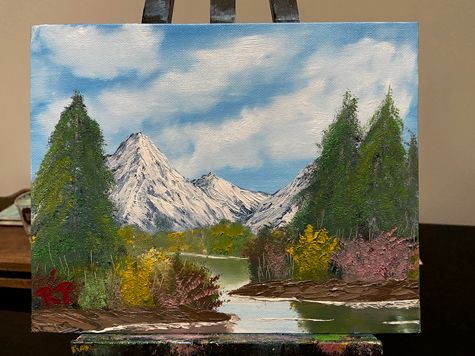
Credit: R. W. Pfeifle
Biography
Home Town:
Gainesville, VA
Undergraduate Degree:
B.S. in Physics, George Mason University, Fairfax VA
Post-graduate Degrees:
Ph.D in Physics, George Mason University, Fairfax, VA
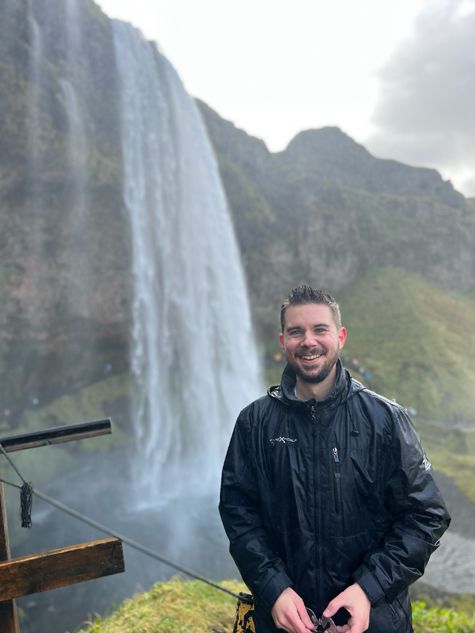
Link to Dr. Pfeifle's GSFC Bio
